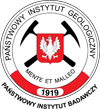The Permian is the youngest period of the Paleozoic. Established by Sir Roderick Murchison in 1841, based on rocks from the Ural Mountains in Russia.
Paleogeography
Permian saw the final stages of the Pangaea supercontinent formation. The single continent was surrounded by a giant ocean, Panthalassa. The Pangea was C-shaped. Its north contained the lands of today's Europe and Asia. The Americas and Africa formed its centre, and India, Australia, and Antarctica were in the south. To the east of the continent was the Tethyean Ocean. Soon after the formation of Pangea, tectonics came into motion. New rifting paved the way for the eventual supercontinent breakup in the next period.
Climate
At the beginning of the Permian, the Earth was cool. Intensive warming began in the middle of the period, and droughts prevailed in the centre of the continent. We can find records of that period in the red-coloured Permian deposits.
Life on Earth
Life in the sea
We know little about what was happening in the depths of the Panthalassa Ocean but have little more information on the marine ecosystems surrounding the continent. The reef builders at the time were sponges, bryozoan, and algae. The reefs were inhabited by brachiopods, molluscs, and fish.
Surviving the drought
With climate warming and the continent drying up, the humid swamps and forests that characterized the Carboniferous gave way to drought-tolerating plant communities. The land was dominated by gymnosperms and conifers, which could retain moisture, enabling survival in dry conditions. In that period, cycads and ginkgos appeared.
The new herbivores
The Permian saw the appearance of numerous pioneering herbivores. The larvae of insects feed on the leaves and roots of plants. Other key herbivores included large reptiles like Pareiasaurs, which could reach up to three metres in length.
Mammalian ancestors
Within synapsids, which evolved from the first amniotes in the Carbonierous, a group called therapsids emerged. Therapsids were the ancestors of mammals, with a primitive version of endothermy enabling a nocturnal lifestyle, allowing them to fill niches inaccessible to cold-blooded reptiles.
Mass extinction
The mass extinction at the end of the Permian ended the reign of the typical marine Paleozoic fauna. It is estimated that up to 85% of all genera of animals and plants disappeared, including all eurypterids, trilobites, and most of the brachiopods, crinoids, and ammonites.
The extinction might have been caused by extensive volcanism, which caused rapid climate change and led to ecological catastrophe.
Do you know...
Thanks to Pangea life could roam freely across the continent. As a result, we find fossils of the same animals across different continents.
















